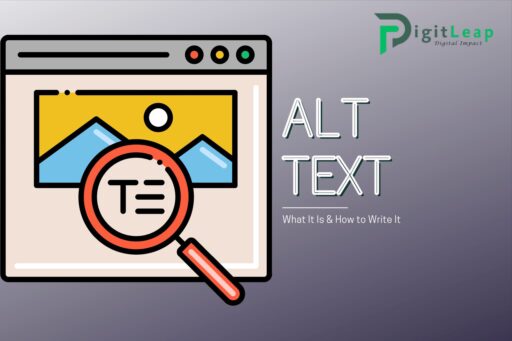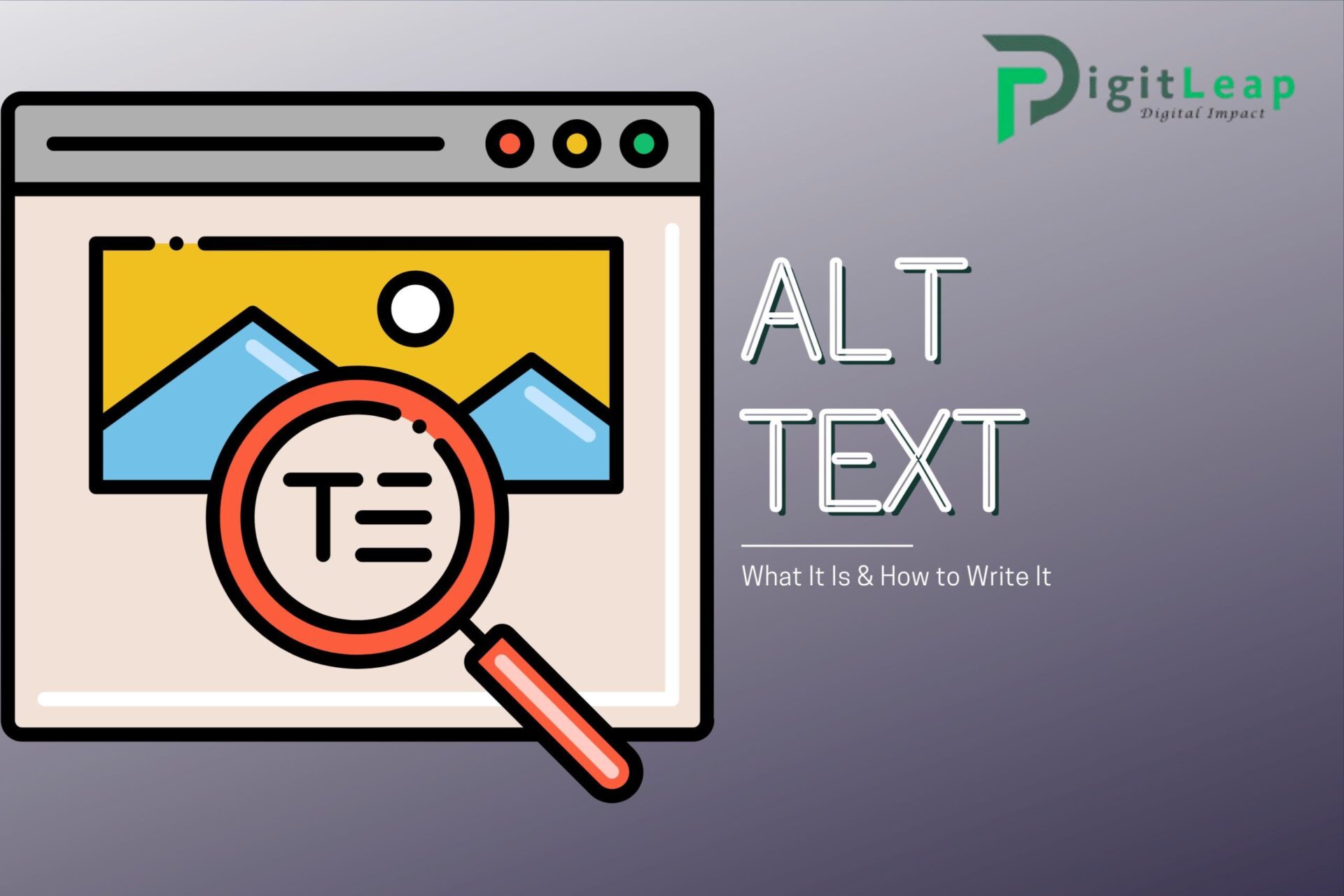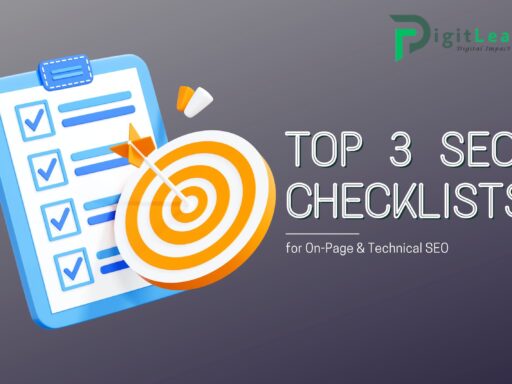Alt Text: What It Is & How to Write It
Alt text, short for “alternative text,” is a simple yet essential part of website optimization that often gets overlooked. It serves multiple purposes: it helps search engines understand your images, makes your website more accessible, and can even impact how well your pages perform in search results. Understanding what alt text is and how to write it effectively can make a big difference in your website’s SEO and user experience. In this article, we’ll explore what alt text is, why it matters, and how to write it correctly.
What Is Alt Text?
Alt text is a brief description of an image that appears in the HTML code of a webpage. It’s also known as “alt attributes” or “alt tags.” The primary purpose of alt text is to describe an image when it cannot be displayed or when someone is using a screen reader to navigate the site. It provides context about the image to users who may not be able to see it.
For instance, if an image fails to load due to slow internet or an error, the alt text will be displayed in place of the image, letting users know what the image was meant to represent. Additionally, for people with visual impairments, alt text helps screen readers convey what is in the image, enhancing their overall experience.
Why Is Alt Text Important?
Alt text plays a critical role in both accessibility and SEO. Here’s why:
- Improves Accessibility: Not all users can see images. Visually impaired people often use screen readers to understand web content, and alt text allows them to “see” images through descriptions. Writing meaningful alt text makes your website more inclusive for all users.
- Helps Search Engines Understand Images: Search engines like Google can’t “see” images. They rely on alt text to understand the content of the image and its relevance to the surrounding text. If you provide well-written alt text, Google can better index your images, which may help them show up in image searches.
- SEO Benefits: Adding keywords naturally into your alt text can boost your SEO efforts. However, it’s important not to stuff keywords unnaturally into alt text, as this can hurt your rankings. Well-optimized alt text improves your chances of ranking higher in search results.
How to Write Alt Text: Best Practices
Now that you know what alt text is and why it’s important, let’s dive into some best practices for writing effective alt text.
1. Be Descriptive, But Concise
The goal of alt text is to provide a clear description of the image. However, it’s important to keep it short and to the point. The general recommendation is to aim for about 100 to 125 characters. Longer alt text can be overwhelming for screen readers and may be cut off in some browsers.
For example, instead of writing:
- “A picture of a sunset over the mountains with a lake in front of it, and the sky is orange and pink with a few clouds.”
You could write:
- “Orange and pink sunset over mountains with a lake in the foreground.”
This version is concise but still gives enough context about the image.
2. Use Keywords Naturally
Including keywords in your alt text can improve your SEO, but only if it makes sense. Forcing keywords into alt text just to boost rankings will come off as unnatural and can hurt your SEO performance. Instead, focus on describing the image as it relates to the content of the page, and add keywords if they fit naturally.
For example, if your webpage is about “healthy meal ideas,” and the image shows a bowl of salad, your alt text could be:
- “Fresh green salad with avocado and tomatoes, a healthy meal idea.”
This description uses the keyword naturally without sounding forced.
3. Avoid Keyword Stuffing
Keyword stuffing is the practice of overloading alt text with too many keywords in an attempt to manipulate search engine rankings. Google’s algorithms are smart enough to detect this, and it can result in penalties that harm your SEO. Always prioritize creating meaningful alt text that benefits the user.
For instance, instead of writing:
- “Salad healthy meal idea green salad healthy food healthy avocado tomatoes salad healthy meal.”
You should opt for something more natural, like:
- “Fresh green salad with avocado and tomatoes.”
This provides relevant information and is much more user-friendly.
4. Don’t Start with “Image of…” or “Picture of…”
It’s tempting to start your alt text with phrases like “Image of…” or “Picture of…,” but this is unnecessary. Since alt text is used to describe images, it’s already assumed that the content is a visual representation. Jump straight into describing the image itself.
For example, instead of writing:
- “Image of a woman holding a cup of coffee.”
Write:
- “Woman holding a cup of coffee.”
This keeps the alt text brief and focused on the image’s content.
5. Describe Functionality for Functional Images
Some images, like buttons or icons, have a specific function on a webpage. When writing alt text for these images, you should describe what the image does, not just what it looks like.
For example, if you have a search icon on your site, instead of writing:
- “Magnifying glass icon.”
You could write:
- “Search button.”
This lets users know the purpose of the image, which is especially important for accessibility.
6. Skip Alt Text for Decorative Images
Not every image on your site needs alt text. If the image is purely decorative and doesn’t add any meaningful content to the page, it’s best to leave the alt text blank. This helps screen readers skip over these images, allowing users to focus on the important content.
For example, if you have a decorative background image or a small design element, you can leave the alt text empty:
alt=""
This tells the screen reader to ignore the image.
7. Use Context-Appropriate Descriptions
Your alt text should always reflect the context of the webpage where the image appears. This is particularly important for product images, blog posts, or articles. A well-written alt text should complement the content of the page and give additional context.
For instance, if you’re writing a blog post about traveling in Italy and the image shows a plate of pasta, your alt text could be:
- “Plate of traditional Italian pasta with fresh basil.”
This ties the image back to the content of the page and provides useful context for users and search engines.
Common Mistakes to Avoid When Writing Alt Text
While writing alt text is fairly simple, there are some common mistakes that can diminish its effectiveness:
- Leaving Out Alt Text: Forgetting to add alt text to your images means missing out on both accessibility and SEO opportunities. Make sure every relevant image has descriptive alt text.
- Writing Alt Text That’s Too Long: Lengthy descriptions can overwhelm screen readers and may not display fully in some browsers. Keep your alt text concise and to the point.
- Using Alt Text for Decorative Images: Adding alt text to purely decorative images adds unnecessary noise for screen readers. If the image isn’t essential to the content, leave the alt text blank.
- Overstuffing Keywords: Cramming keywords into your alt text is not only ineffective but can harm your SEO. Focus on creating helpful, natural-sounding descriptions.
Conclusion
Alt text may seem like a small detail, but it plays a significant role in both SEO and accessibility. By writing concise, descriptive, and keyword-optimized alt text, you can help search engines understand your images and improve the overall experience for your users, especially those using screen readers.
Remember to focus on natural descriptions, avoid keyword stuffing, and only use alt text where it’s needed. When done correctly, alt text can contribute to better search engine rankings and a more accessible website for all visitors.






